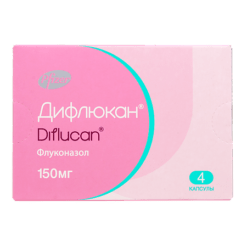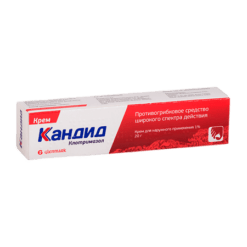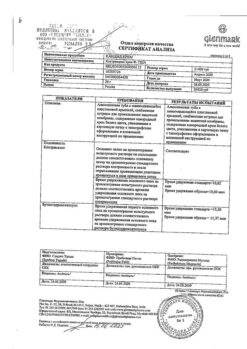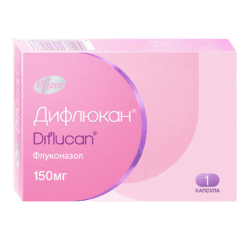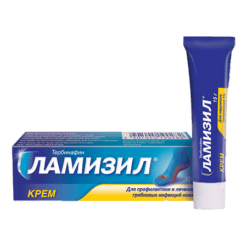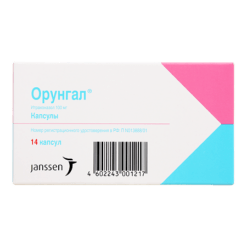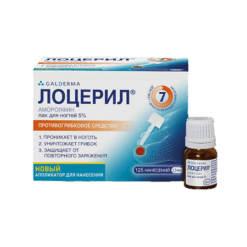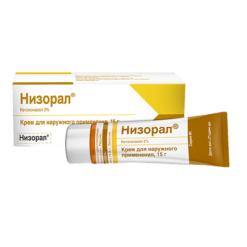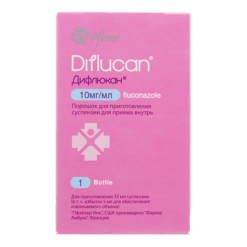No products in the cart.
Cancidas, lyophilizate 70 mg
€1.00
Out of stock
(E-mail when Stock is available)
Description
Pharmacodynamics
Caspofungin is a semi-synthetic lipopeptide compound (echinocandin) synthesized from the fermentation product of Glarea lozoyensis.
CANSIDAS is the first representative of a new class of antifungal drugs that inhibits the synthesis of β-(1,3)-D-glucan, the most important component of the cell wall of many mycelial fungi and yeasts. In mammalian cells β-(1,3)-D-glucan is not present.
In vitro caspofungin has activity against various pathogenic fungi of the genus Aspergillus (including Aspergillus fumigatus, Aspergillus flavus, Aspergillus niger, Aspergillus nidulans, Aspergillus terreus and Aspergillus candidus) and Candida (including Candida albicans, Candida dubliniensis, Candida glabrata, Candida guilliermondii, Candida kefyr, Candida krusei, Candida lipolytica, Candida lusitaniae, Candida parapsilosis, Candida rugosa and Candida tropicalis).
In vivo activity of caspofungin in parenteral administration to animals with normal and reduced immunity, infected with Aspergillus and Candida was revealed. Administration of caspofungin in these cases contributes to the increase in life expectancy of animals (Aspergillus and Candida) and eradication of pathogenic fungi (Candida) in the affected organs. Also caspofungin is active in immunodeficient animals infected with Candida glabrata, Candida krusei, Candida lusitaniae, Candida parapsilosis, Candida tropicalis in which eradication of pathogenic fungi (Candida) in the affected organs is achieved. Caspofungin shows high activity in prevention and treatment of pulmonary aspergillosis confirmed by studies on models of fatal in vivo lung infections.
Cross-resistance
Caspofungin is active against strains of Candida fungi resistant to fluconazole, amphotericin B or flucytosine.
Drug resistance
In some patients varieties of Candida fungi with decreased sensitivity to caspofungin are isolated during treatment with the drug. There is no minimum inhibitory concentration (MIC) determination for caspofungin because there is no correlation between MIC and clinical efficacy of the drug. No drug resistance to caspofungin has been observed in patients with invasive aspergillosis.
Standardized methods for determining sensitivity to β-(1,3)-D-glucan synthesis inhibitors have not been established, and in vitro sensitivity studies may not correlate with clinical data.
Pharmacokinetics
Distribution
After a single intravenous infusion within 1 hour, the plasma concentration of caspofungin decreases in a multiphase fashion. There is a short α-phase immediately after infusion, followed by β-phase with a half-life (T1/2) of 9 to 11 hours, which is the main characteristic of the drug distribution profile and has a clear log-linear dependence between 6 and 48 hours after injection. During this period, the drug concentration in plasma decreases significantly. There is also an additional γ-phase with a T1/2 of 40 to 50 hours. Distribution influences plasma clearance to a greater extent than excretion or biotransformation. Caspofungin is largely bound to plasma proteins (approximately 97%) with minimal binding to erythrocytes. About 92% of labeled [3H]-caspofungin acetate is detectable in tissues 36-48 hours after administration of a single dose of 70 mg. During the first 30 hours after administration, excretion and biotransformation of caspofungin are insignificant.
Metabolism
Caspofungin is slowly metabolized by hydrolysis and N-acetylation to form an open ring peptide compound. At later times (5 days or more after administration of a single dose of labeled [3H] caspofungin acetate), low levels (less than 7 pcmol/mg protein or 1.3% or less of the administered dose of the drug) of labeled [3 H] caspofungin acetate, which is due to the formation of two active intermediate products of caspofungin breakdown.
In a further metabolic process, including hydrolysis to constituent amino acids and their derivatives, to form dihydroxytomotyrosine and N-acetyl-dihydroxyhomotyrosine. These tyrosine derivatives are found only in the urine, indicating high renal clearance of these metabolites.
Elimation
About 75% of the drug is excreted from the body (pharmacokinetic study with radioactively labeled caspofungin): 41% with the urine and 34% with the feces.
Plasma concentrations of tagged and caspofungin do not differ during the first 24 to 48 hours after dose administration, then drug concentrations decrease more rapidly, with a decrease below quantification observed 6-8 days after dose administration and of radioactive tagged after 22.3 weeks. A small amount of caspofungin is excreted unchanged in the urine (approximately 1.4% of the dose).
Renal clearance of the original drug is low and is approximately 0.15 ml/min.
Pharmacokinetic features in selected patient groups
Depending on gender
The plasma concentration of caspofungin in healthy men and women is the same on day 1 after administration of a single dose of 70 mg. After 13 daily doses of 50 mg, the plasma concentration of caspofungin was approximately 20% higher in some women than in men.
In the elderly
The plasma content of caspofungin in healthy elderly men and women (65 years and older) was 28% higher (estimated by the area under the concentration-time curve – AUC) compared to healthy young men. In elderly patients with invasive candidiasis or on empirical therapy the same moderate changes of drug concentration in plasma were observed as in the group of healthy elderly patients compared to healthy young patients. No dosing regimen correction is required for elderly patients (65 years and older).
In patients with impaired hepatic function
The plasma concentration of caspofungin in patients with mild hepatic impairment (5-6 points on the Child-Pugh scale) is increased by approximately 55% (AUC) after administration of a single dose of 70 mg compared to healthy individuals. Administration of the drug to these patients for 14 days (70 mg on day 1 followed by daily administration of 50 mg) was accompanied by a 19-25% increase (AUC) in the plasma concentration of caspofungin on days 7 and 14 compared to healthy volunteers.
In children
Five long-term clinical studies have been conducted examining CANSIDAS in patients under 18 years of age, including studies of the pharmacokinetics of the drug (initially in adolescents [12-17 years] and children [2-11 years], then in young children [3-23 months] and in newborns and children in the first three months of life).
In adolescents (12-17 years) who received caspofungin at a dose of 50 mg/m2 (maximum daily dose, 70 mg), plasma concentrations (AUC0-24 h) were generally consistent with those of adults taking 50 mg of caspofungin daily. All adolescents received caspofungin at a dose above 50 mg, and six of eight patients received the maximum daily dose of 70 mg. The plasma concentrations of caspofungin in these patients were lower compared with those in adults who received the drug at a daily dose of 70 mg, the very dose most commonly prescribed for adolescents.
In children aged 2-11 years who received caspofungin at a dose of 50 mg/m2 per day (maximum daily dose of 70 mg per day), its plasma concentration (AUC0-24) was comparable to that of adult patients administered caspofungin at a dose of 50 mg daily. On the first day of use, the plasma concentration of the drug (AUC0-24) was slightly higher in children compared to adults (by 37% at the compared doses of 50 mg/m2 and 50 mg once daily). However, it should be emphasized that plasma concentrations (AUC0-24) were still lower in children on the first day than in adults with long-term treatment.
In children aged 3-23 months who received caspofungin at a daily dose of 50 mg/m2 (maximum dose of 70 mg), the plasma concentration of caspofungin during long-term use was comparable to that of adults who were prescribed a dose of 50 mg/day. As in older children, children in this age group who received caspofungin at a dose of 50 mg/m2 had higher plasma drug concentrations on the first day of treatment compared with adults who received the standard 50 mg dose of caspofungin. The pharmacokinetic parameters of caspofungin at a dose of 50 mg/m2 in children of the younger age group (3-23 months) and the older group (2-11 years) with the same dosing regimen were comparable.
In infants and children less than 3 months of age who were administered caspofungin at a dose of 25 mg/m2, the peak concentration of caspofungin (C1h) and its threshold concentration (C24h) after repeated administrations were similar to those of adults receiving the drug at a dose of 50 mg daily. On day 1, the peak C1h concentration was comparable to that of adults, and the threshold C24h concentration was moderately increased in neonates and infants compared with the corresponding figures in adults. Determination of plasma drug concentrations (AUC0-24) was not performed in this study because of the difficulty of sampling. Note that no efficacy and safety studies have been performed in prospective adequate clinical studies of CANSIDAS in infants and children less than 3 months of age.
Indications
Indications
Active ingredient
Active ingredient
Composition
Composition
1 vial contains:
active ingredient – caspofungin acetate 83.9 mg (caspofungin equivalent as anhydrous base 75.6 mg)*;
excipients: sucrose 54.0 mg, mannitol 36.0 mg, glacial acetic acid 2.7 mg, sodium hydroxide q.s. to pH 6.0.
* – including an excess to provide the appropriate dosage of the active ingredient (70 mg, respectively)
.
How to take, the dosage
How to take, the dosage
The daily dose of CANSIDAS is administered by slow intravenous infusion (â¥1 hour) once daily.
Empirical therapy. On the first day a single loading dose of 70 mg is administered, on the second and subsequent days of treatment the daily dose is 50 mg per day. The duration of therapy depends on the clinical and microbiological efficacy of the drug.
Empirical therapy should be carried out until complete resolution of neutropenia. If fungal infection is confirmed the patients should be treated for at least 14 days; CANSIDAS therapy should be continued for at least 7 days after clinical manifestations of both fungal infection and neutropenia disappear.
The daily dose of CANSIDAS may be increased to 70 mg if the daily dose of 50 mg is well tolerated by the patient but does not produce the expected clinical effect.
Invasive candidiasis. On the first day a single loading dose of 70 mg is administered, on the second and subsequent days of treatment the daily dose is 50 mg per day. The duration of treatment of invasive candidiasis is determined by clinical effect and microbiological efficacy. The general rule is to continue antifungal therapy for at least 14 days after the last receipt of hemoculture. Patients with persistent neutropenia may require longer treatment until neutropenia resolves.
Invasive aspergillosis. On the first day a single loading dose of 70 mg is administered, on the second and subsequent days of treatment the daily dose is 50 mg per day.
Duration of treatment depends on the severity of the underlying disease, the patient’s recovery from immunosuppression and clinical effect.
Esophageal and oropharyngeal candidiasis. The daily dose is 50 mg per day for the entire course of treatment.
Elderly patients
Elderly patients (65 years and older) do not require dose adjustment.
Reduced renal function, gender and racial differences
No dose adjustment is required.
Patients with hepatic impairment
Patients with hepatic impairment of 5-6 points on the Child-Pugh scale do not require dose adjustment. In patients with hepatic insufficiency with 7-9 scores by Child-Pugh scale the maintenance daily dose of CANSIDAS is decreased to 35 mg per day, however the loading dose of 70 mg during the first day of treatment is maintained if there are corresponding indications.
There is no clinical experience of using the drug in patients with severe hepatic impairment (more than 9 points on the Child-Pugh scale).
In concurrent administration of CANSIDAS with drug clearance inducers (rifampicin, efavirenz, nevirapine, phenytoin, dexamethasone or carbamazepine), an increased daily dose of CANSIDAS should be considered up to 70 mg/msup>2 for this group of patients (but not exceeding the allowable dose of 70 mg).
Children
The daily dose of CANSIDAS is given to children (3 months to 17 years) by slow intravenous infusion (â¥1 hour) once daily.
The dose is calculated taking into account the patient’s body surface according to Mosteller’s formula (see CANSIDAS INFUSION FOR CHILDREN).
For all indications, a single loading dose of 70 mg/m2 on the first day (must not exceed the allowable dose of 70 mg), on subsequent days – 50 mg/m2 per day (must not exceed the allowable dose of 70 mg). The duration of therapy is determined individually and depends on the indication for administration (see general recommendations for use in adult patients in this section).
The daily dose of CANSIDAS may be increased to 70 mg/m2 if the daily dose of 50 mg/m2 is well tolerated by the patient but does not produce the expected clinical effect (should not exceed the allowable dose of 70 mg).
When CANSIDAS is concomitantly prescribed with drug clearance inducers (rifampicin, efavirenz, nevirapine, phenytoin, dexamethasone or carbamazepine) the possibility of increasing the daily dose of CANSIDAS to 70 mg/m2 should be considered.sup>2 for this patient group (but not exceeding the allowable dose of 70 mg).
There is no clinical experience with the drug in children with any degree of hepatic impairment.
CANDIDAS PRESCRIPTION FOR INTERVENTIONAL INFUSIONS FOR ADULTS
DO NOT USE DEXTROSE (α-D-GLUCOSE) INFUSION SOLUTIONS because CANDIDAS is unstable in infusion solutions containing dextrose.
CANSIDAS DOES NOT mix or be administered concomitantly with any other medications as there is no evidence of compatibility with other intravenous medications.
Examine the finished infusion solution to make sure there are no suspended particles or color changes.
Phase 1: Preparation of Primary Solution in a Vial
Before dilution, the cold bottle of CANSIDAS must be brought to room temperature and 10.8 ml of sterile water for injection, methyl paraben, propyl paraben or bacteriostatic water for injection with benzene alcohol must be added under aseptic conditions. The concentration of the drug in the solution will be 7.2 mg/ml (70 mg vial) or 5.2 mg/ml (50 mg vial).
The white or almost white powder of CANSIDAS should dissolve completely. Stir the contents of the vial gently until a clear solution is obtained. Examine the primary solution to ensure that there is no suspended sediment or discoloration. The primary solution prepared in this manner can be stored in the vial for up to 24 hours at a temperature below 25 °C.
Phase 2: Preparation of the final infusion solution of CANSIDAS
The infusion solution is prepared under aseptic conditions. The 0.9% sodium chloride solution for infusion or Ringer’s solution with lactate are used as solvents. To prepare the final infusion solution to be administered to the patient, an appropriate amount of CANSIDAS reconstituted solution (as shown in the table below) is added to a plastic infusion bag or a bottle with infusion solvent (sterile 0.9% sodium chloride solution for infusion or Ringer’s solution with lactate) of 250 ml capacity. When administering a daily dose of 50 mg or 35 mg, the volume of the final solution can be reduced to 100 ml.
A turbid or sediment-containing solution should not be used.
The finished final infusion solution must be used:
within 24 hours if stored at room temperature (below 25°C), within 48 hours if stored in the refrigerator (2-8°C).
PREPARATION OF CANSIDAS PRIMARY INFUSION SOLUTION
* Always add 10.8 ml of solvent to the bottle of CANSIDAS, regardless of the dose (50 mg or 70 mg)
** In the absence of a 70 mg bottle, the dose can be prepared with 2 50 mg vials
PREPARATION
Preparation of KANSIDAS PRECAUTION FOR INTERVENTION INFUSION FOR CHILDREN
The process of preparing KANSIDAS solution for intravenous infusion in children is similar to that for infusion in adults. It includes the two steps described above – preparation of the primary and final solution.
The main difference is in determining the drug dose, which is calculated using the formula below and takes into account the value of the patient’s body surface area.
Determination of the body surface area (BSA) to calculate the dose in children
Before preparing the infusion solution it is necessary to calculate the body surface area (BSA) of the child using the following formula (Mosteller formula):
PPT (m2) = âHeight(cm) x Weight(kg)/3600
Prepare the drug for infusion in children over 3 months of age (using a 70 mg vial)
Interaction
Interaction
Caspofungin is not an inhibitor of any cytochrome P450 (CYP) enzyme, nor is it an inducer of metabolism of other drugs mediated by CYP3A4 isoenzyme. Caspofungin is not a substrate for P-glycoprotein and is a weak substrate for cytochrome P450 enzymes.
The pharmacokinetics of caspofungin is not affected by itraconazole, amphotericin B, mycophenolate mofetil, nelfinavir or tacrolimus.
In turn, caspofungin has no effect on the pharmacokinetic parameters of itraconazole, amphotericin B, rifampicin or active metabolites of mycophenolate mofetil.
Caspofungin reduces the 12-hour blood concentration (C12h) of tacrolimus by 26%. In patients receiving both drugs, it is recommended that tacrolimus blood concentrations be monitored and, if necessary, the dose be adjusted.
Cyclosporine: concomitant use of caspofungin and cyclosporine may cause a transient increase in ACT and AL activity (not more than 3 times the upper limit of normal), as well as an increase in AUC for caspofungin by approximately 35% without changing cyclosporine concentrations. No serious hepatic adverse events have been observed with concomitant administration of these drugs (up to 290 days). Concomitant administration of caspofungin and cyclosporine may be considered reasonable in cases where the potential benefit of such administration exceeds the possible risk.
Rifampicin may both accelerate and retard the distribution of caspofungin.
In one study, rifampicin was initially administered for 14 days until equilibrium plasma concentrations of the drug were reached and then both drugs were used simultaneously for another 14 days. At the equilibrium concentration stage of rifampicin, the concentration of caspofungin decreased slightly, with excretion of caspofungin decreasing by approximately 30%.
The opposite effect of rifampicin was observed when rifampicin and caspofungin were concomitantly administered for 14 days: a transient increase in the plasma concentration of caspofungin was observed on the first day (increase in AUC by approximately 60%). At the same time, when caspofungin was administered with rifampicin monotherapy for 14 days, there was no effect of rifampicin on caspofungin concentration.
The concomitant use of drug clearance inducers (efavirenz, nevirapine, phenytoin, dexamethasone or carbamazepine) with caspofungin may result in clinically significant decreases in caspofungin concentration. Evidence suggests that the decrease in caspofungin concentrations induced by these drugs is due to accelerated elimination rather than metabolism. Therefore, when combining caspofungin with efavirenz, nelfinavir, nevirapine, rifampicin, dexamethasone, phenytoin, or carbamazepine, consider maintaining the daily dose of CANSIDAS 70 mg without reducing it after the loading dose of 70 mg administered during the first day of treatment.
In children, co-administration of dexamethasone and caspofungin may be accompanied by a clinically significant decrease in the threshold concentration of caspofungin. Co-administration of drug clearance inducers (rifampicin, efavirenz, nevirapine, phenytoin, dexamethasone or carbamazepine) in children as in adults requires increasing the daily dose to 70 mg/m2 (the daily dose should not exceed 70 mg, regardless of the estimated dose for that patient).
Contraindications
Contraindications
WARNING
Consistent use with cyclosporine.
Patients with moderate hepatic impairment (Child-Pugh scores 7 to 9)
There are insufficient data on the use of CANSIDAS in children and adults with endocarditis, osteomyelitis and meningitis caused by pathogenic strains of Candida fungi and in children as first-line therapy for invasive aspergillosis.
Side effects
Side effects
The observed adverse reactions associated with the use of the drug were usually mild and rarely required withdrawal of the drug in both adults and children.
In adults:
Systemic PE:often – fever, headache, sensation of chills;
Gastrointestinal tract:often – nausea, diarrhea, vomiting, abdominal pain;
Blood and lymphatic system:frequently – anemia;
Cardiovascular system: frequently – tachycardia;
Peripheral vascular disorders:frequently – phlebitis/thrombophlebitis, peripheral edema, venous postinfusion complications, “hot flashes”.
Musculoskeletal system: frequently – arthralgia;
Respiratory system: frequently – shortness of breath;
Skin and subcutaneous fat: rash, itching (including in the area of drug administration), increased sweating;
Laboratory parameters:often – hypoalbuminemia, hypoproteinemia, hypokalemia, hyponatremia, hypomagnesemia, hypocalcemia, leukopenia, neutropenia, thrombocytopenia, eosinophilia, decrease of hemoglobin and hematocrit, increase of partial thromboplastin and prothrombin time, proteinuria, leukocyturia, microhematuria, increased serum aspartate aminotransferase (ACT), alanine aminotransferase (ALT), alkaline phosphatase (ALP), direct and total bilirubin, creatinine concentration; infrequent – hypercalcemia.
There are isolated reports of rare cases of liver dysfunction and allergic reactions – rash, facial edema, itching, fever or bronchospasm, and anaphylaxis. Rare cases of liver dysfunction, as well as peripheral edema and hypercalcemia, have been identified in the post-marketing period. In patients with invasive aspergillosis, pulmonary edema, adult respiratory distress syndrome, and infiltrates on radiographs.
In CHILDREN:
Systemic PE:very often fever, often headache, chills, histamine-mediated reactions (i.e. Allergic and anaphylactic reactions).
Cardiovascular system: frequently – tachycardia, decreased blood pressure, “hot flashes”, peripheral edema.
Digestive system: frequently – liver function abnormalities.
Skin and subcutaneous fat: often – rash, itching (including in the area of drug administration).
Laboratory: often – hypokalemia, hypomagnesemia, hypercalcemia, eosinophilia, increased serum aspartate aminotransferase (ACT), alanine aminotransferase (ALT) activity, glucose and phosphorus concentration, decreased serum phosphorus concentration.
Local reactions:often – pain at the site of insertion of the catheter, histamine-mediated reactions at the site of insertion – swelling.
Overdose
Overdose
There are no data on overdose of the drug. The highest dose tested – a single single dose of 210 mg (6 healthy volunteers) – was well tolerated in clinical trials.
The drug was also shown to be well tolerated when administered in a daily dose of 100 mg for 21 days (15 healthy volunteers).
In accidental overdose of caspofungin, dialysis is not indicated (not removed by dialysis).
Pregnancy use
Pregnancy use
There is no clinical experience with the drug in pregnant and breastfeeding women. In animals, caspofungin penetrates through the placental barrier.
Caspofungin should not be administered to women during pregnancy, except in cases when administration of the drug is vital.
Since there is no data on excretion of caspofungin into milk, breastfeeding should be discontinued if the drug is to be administered during lactation.
The efficacy and safety of CANSIDAS in children from 3 months to 17 years of age has been confirmed by sufficient data from clinical studies which show that the drug has been successfully used in this group of patients for the same indications as in adults.
There are no data on the safety and efficacy of CANSIDAS in infants and children less than 3 months of age.
Additional information
| Shelf life | 2 years. |
|---|---|
| Conditions of storage | At the temperature from 2 to 8 ° C. Keep out of reach of children. |
| Manufacturer | Merck Sharp and Doume-Schiebre Laboratories, France |
| Medication form | lyophilizate |
| Brand | Merck Sharp and Doume-Schiebre Laboratories |
Related products
Buy Cancidas, lyophilizate 70 mg with delivery to USA, UK, Europe and over 120 other countries.


